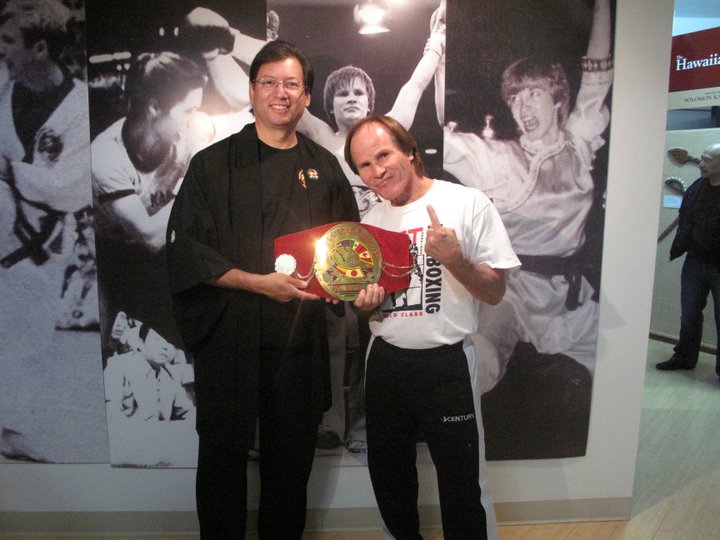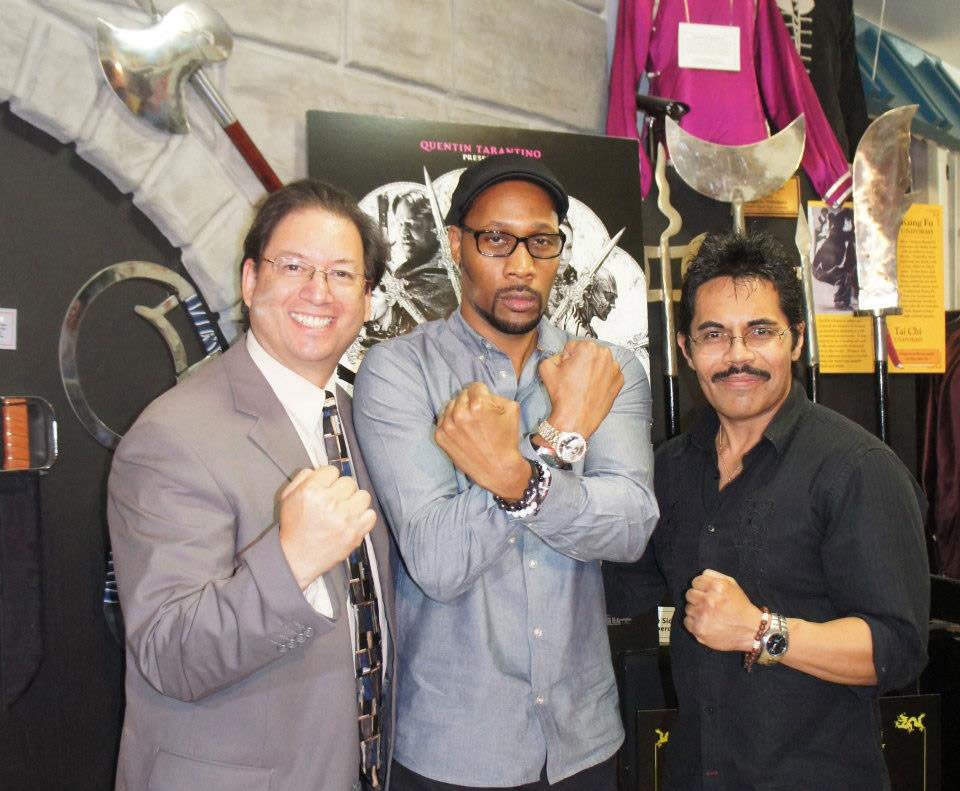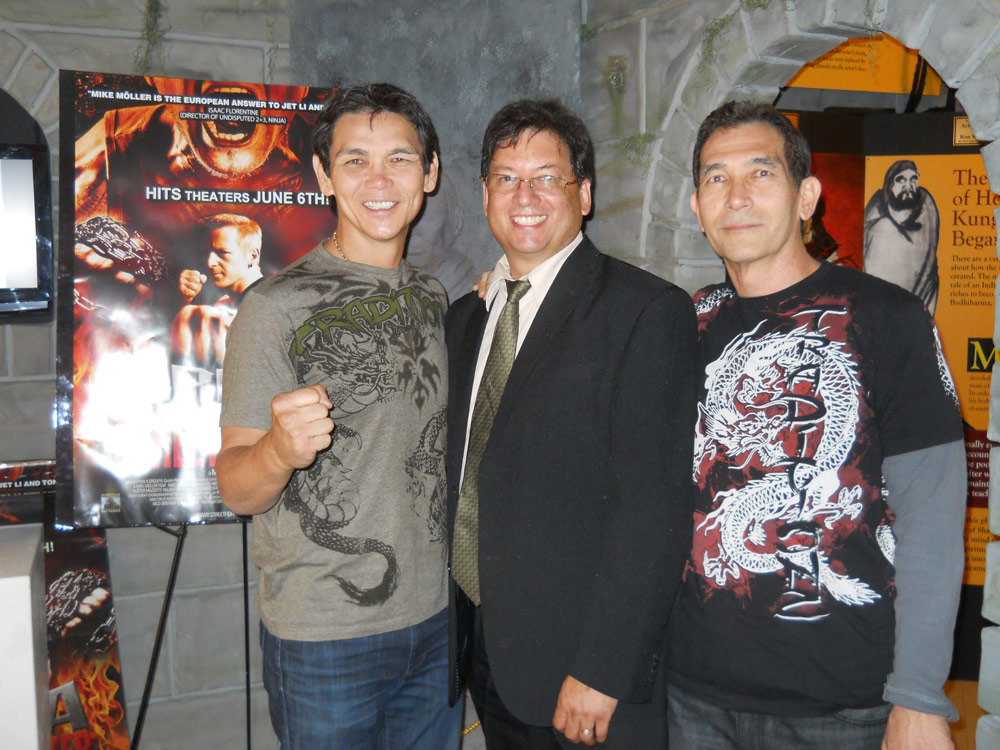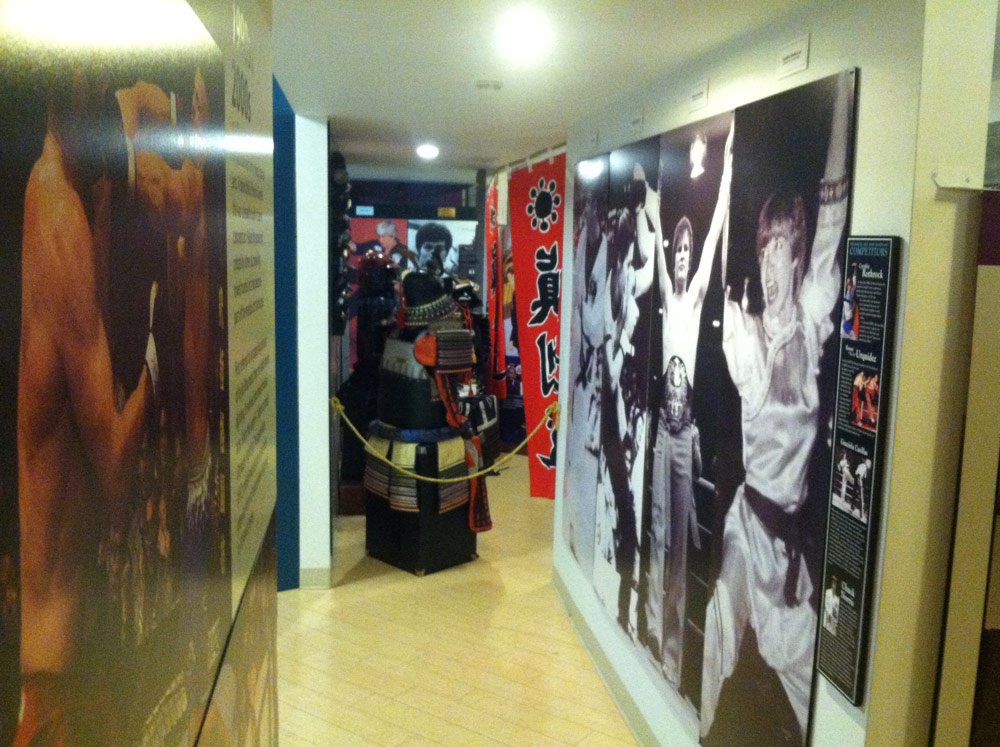Museum President Michael Matsuda
Enjoy this in-depth look at the founder and president of the Martial Arts History Museum
By Guest Contributor Tommy Wolfe of Kung Fu Kingdom
Michael Matsuda is founder and president of the Martial Arts History Museum, the first of its kind, which is located in Burbank, California. Designed by the artists of #Disney, #Dreamworks and The Simpsons, it is filled with culture, history, tradition and more. They hold events, seminars, tour visits and movie screenings. Let’s find out more about it by checking in with Michael himself!
Tommy: Nice to meet you Michael!
Michael: Thanks Tommy, thanks for having me!


So, let’s start out by asking, what is your background in the martial arts?
I officially started the arts at my local Japanese Community Center in 1968. Judo was really the only art available to us at the time, it was torture! I was one of only two kids in the entire school and it was very traditional. When karate schools started popping up I joined for a bit and then I went on to learn JiuJitsu. One day, Sifu Al Dacascos came to visit the school and he was wearing this cool, high-collared black outfit. He was moving in circular patterns and that was it, I knew from there I had to study that art. I started learning Shaolin kung fu from a college student. Now note, I was actually learning kung fu around 1968 but informally. Later I joined the YMCA and learned Siu Lum Pai kung fu from one of Buck Sam Kong’s senior students, Lyle Fujioka. Following my eight years learning Shaolin, I studied Monkey style kung fu for 35 years, which I currently teach today. So, now, 2017, it’s close to 47 years. I’ve also done kickboxing with Cecil Peoples, Wing Chun kung fu and a few other things here and there.
As unusual as it sounds, I am actually the only one in the 6th generation of the Monkey art form.
The family tree is very short and sadly, it’s such a difficult art form that everyone drops out after a year or two. My instructor was the only one in the 5th generation and his instructor was the only one in the 4th. I am the only one who stayed and completed it, so I am the inheritor of the art.
I want to add a little correction. It was around 1967, my mother used to take me to her friend’s house. Her name was Emily who ended up marrying my dad’s cousin. Anyway, she had a house that was designed like a boarding house. To raise money, she would rent the rooms out to many different kinds of people. One of them was named Juan. I befriended Juan and he began teaching my kung fu. He was a student of Ark Y. Wong, I believe. So, that’s my real start. I had forgotten about that until Carl Totton showed me his picture in Arky Y. Wong’s group.
You were heavily involved in the arts in the early days!
Pretty much! I used to go to the tournaments when I was young and I got to at least witness the tail end of the “blood and guts” era of pointfighting. I got to see Eric Lee in his early days, Bruce Lee when he was among us, Fumio Demura at the Deer Park and see the Ed Parker’s Long Beach Internationals in the early 1970s and Al Dacascos when he was young (In fact, he was my first inspiration). I got to witness first hand, when there were virtually no martial arts schools to a flood of schools. I remember hardly anyone ever heard the word “kung fu”. I remember when Judo was the only martial art available. I remember the string of Tracy Schools spread throughout the West. I remember Gene LeBell’s early judo school. I used to go to Gene LeBell’s wrestling matches. I remember going to the Chinese theaters to watch kung fu movies in the 70’s. I was privileged, even though I was quite young, to see nearly every pioneer in person, I remember the Bruce Tegner ads, the Count Dante ads in the comics, it was a great time! I remember full-contact karate in the early stages, that was something else! I was honored to be able to cover those events when I got older and started writing for the magazines. For me, those were the early days that I remember well.
Now, a Museum actually dedicated to the martial arts is pretty much unheard of, what made you feel qualified to start it?
I wrote as a contributing editor of Inside Kung Fu, Black Belt and nearly every magazine for about 20 years. I founded and published Martial Art Magazine for about four years. I have written and published five books and I have degrees in journalism, business and art with an emphasis on marketing and design. I also attended the American Film Institute for editing and worked as a producer for commercials and corporate videos for twenty years. I was selected twice as one of the Top 100 producers of the year by Producer magazine and graced its cover.
But let me clarify my qualifications to do a museum even more. I had the publishing and design background behind me. However, once I made the decision that the Museum would be a possibility, I knew I had to expand my education. So, for the next 10 plus years, I went back to college to take a number of business classes as well extensive research on museum design and layout, how to archive artifacts, how a Museum operates, etc. I consulted with many Museum presidents on their target markets, the best methods of creating a learn environment for kids, how to build sets, how to add animation and how to create rotating exhibits and addition unique forms of functionality for learning. I did not want to be someone who just knew about martial arts history and think I could actually do a Museum, I went back to school to learn how to do it so that it would be successful and not fail. And that’s why it is still here after 17 years. I also got the mayor involved, the city involved and worked hand in hand with leaders from the school boards.
So, when was it born and what made you finally decide to create such a facility?
It originally started out on the 15th of September, 1999. After years of travelling as an exhibit, we opened in Santa Clarita in California in 2006 and relocated to Burbank in 2010 and re-opened in 2011. Now, let me point out, the Museum concept began when I had the magazine, back in 1987. When I sold the magazine, I was already in discussion with Doug Wong and many others about the Museum. I was already doing interviews to prepare for it, but, it was until 1999 that it was officially registered as a Museum. So it was the late 1980s that it began, but I didn’t feel it wasn’t the right time for a Museum.
Let me begin by talking about the impact of such a facility and the effect it has on the entire martial arts community. Having a Museum validates the martial arts. I don’t mean validation for styles’ sake, I mean it shows to the world that the martial arts industry, its people and the entire community are important enough to have a Museum. It reveals that the martial arts isn’t just a sport or hobby, but that the martial arts played a unique role in history, especially in America. The martial arts have changed people’s lives, it has created new industries and opened the doors to goal-oriented frames of mind. So many of our pioneers made huge sacrifices to bring their art to the West. Many endured prejudice, racism and more and if there is not a Museum to reveal what they did, all that history would be lost forever.
I’ll tell you a quick story, I had talked to the grandson of a martial arts instructor in the early days. He told me that when he died, they had his uniforms and weapons but they didn’t know what they were so they just tossed them away, that’s really sad!
Indeed!
I created the Museum because I felt it was the right thing to do. I love the arts, been doing it for 55 years now, but I felt that we needed something that would make an impact on the whole world. A place that would talk about culture, history, artistry and impact the arts have had on American history. This Museum is not about me, you don’t see my picture all over the Museum, this is about all of us. It’s about Asian culture and tradition, it’s about the sacrifices that so many made to bring the arts here. Why me? It all starts with one person, one idea and then it goes from there. Has it been easy? No, not at all, it’s been a hard road!
So, what was the process and obstacles you faced in setting this up then?
I wanted to very cautious about creating a Museum for the arts. Some people think you can just put pictures on the wall and uniforms everywhere and call it a Museum. I spent many years on the road as a travelling exhibit. We took the Museum from the West to the East of the nation. I wanted to see if there was enough interest in creating a Museum. If there wasn’t enough interest, then there would be no point in starting the Museum in the first place. We travelled for years and later became a non-profit organization. During that time I’ve met with every leading government official. From mayors, congressman, senators, etc to pitch the idea for the Museum. I’ve had doors close right in my face, threats, people trying to deceive us, cheat us, steal from us and thousands upon thousands of promises that were never kept, it has proven a real ordeal at times!
With all those inherent difficulties, why did you continue?
Because I knew without a doubt, we would succeed. No matter how many times I had fallen, I had to get up and keep going. Despite the rocky road, we got to know so many giving individuals that would join us and help us along the way. People who would donate funds, help us carry equipment, stay up all night to set up our stuff and much more. These amazing supporters and friendships we have created along the way kept us going. When people ask me what is your favourite or best thing in the Museum, I say, “it was the journey and the wonderful friendships we made along the way”.
What do you feel is the main focus of the Museum?
There are several areas of focus for the Museum. History is of course, our most important. The martial arts played such a unique role in both Asian and American history. For the West, the biggest influence began in films and from there, the martial arts school explosion occurred. Today, we have over 27,000 known martial arts schools in America, but I want to point out something that I feel requires great attention. Today, so many of our pioneers and legends are passing away. Many have written books and which will eventually go out of print. Many were in magazines and nearly every martial arts magazine has folded. Without a Museum, so many of those pioneers, their legacy and the important role they played in history will disappear. That is truly sad and that’s what is happening. As one pioneer told me, “This is not for me, this is for my great grandson to learn what his great grandfather did in history”.
Another nice story to relate, one lady had the first, actual kendo uniform from Funakoshi’s student from 1920. It was in her closet for decades. When she heard about us, she was so relieved and donated it to us. She said, “Now, my grandfather’s history will be remembered. I didn’t want to throw it away because it meant so much to him.”
That’s touching! Visiting the Museum and I truly learned a lot, it was very inspiring.
Thank you. I think our most difficult task is for the community as a whole, to understand what a potential impact a Museum will have for everyone. From the garage school owner to the head of the UFC. A Museum opens the doors to young children who have never studied the arts, to visitors who come from all across the globe and more. When there is an understanding of the potential of an organized Museum such as this, we can make a bigger difference.
What other aspects do you feel are of importance here?
Culture. It’s not only important to learn the art, but to learn about the country from which it originated. If you practice a Japanese art form, learning about Japan and how the martial arts played a key role in that country’s history. We bow but don’t know how to do it properly, we utter Japanese words but do we know the meaning? By learning from the root, where the arts came from and how it played a significant part in Asian culture, we can understand our own art form much better. Countless times I’ve asked karate students which country their art came from and they didn’t know!
A museum such as this plays a unique role in the industry as a whole. As most tournament directors and school events realize, getting sponsors from the likes of Nike, Coke, Sportmart etc are virtually impossible. Now, that we have a Museum, these huge sponsors can visually see that the martial arts continues to play a huge role in everyday American life. We now have karate moms instead of soccer moms, the martial arts plays a huge role in XBox games, PlayStation and more. If sponsors like these see the community has a museum, they will have more interest in sponsoring the museum and other events as well.
How does the future look for the Museum?
I am thrilled the Martial Arts History Museum is doing well. We are a non-profit 501(c)(3) organization and are completely dependent on donations, sponsors and memberships. So much of our support comes from the individual, the small school owner, the people that believe in our efforts and what we are trying to do. To me, these are pioneers. The Museum is able to support itself, but it is my hope to grow so that we can put in more things about the arts. We do a lot of fundraising events to raise money to purchase our TVs, art, displays, outdoor activities, etc.


How can people donate to this cause?
As a registered non-profit, all donations are tax-deductible. If interested they can send a cheque to the Martial Arts History Museum, 2319 W. Magnolia Blvd., Burbank, CA 91506 or visit our website at:http://martialartsmuseum.com/ and make a donation online.
What special message would you like to share with Kung-fu Kingdom readers?
Opportunities don’t come by very often and the Martial Arts History Museum is a monumental opportunity for the entire martial arts community. This is a place that will keep our history alive, this is a place where the world can see we, all of us, made a difference. We will not have an opportunity like this again, this is our one window and that’s it. The martial arts has been here in America since the 1800s and now, over 150 years plus later, we finally have a Museum. Join us, support us, this is our history. Thank you.
